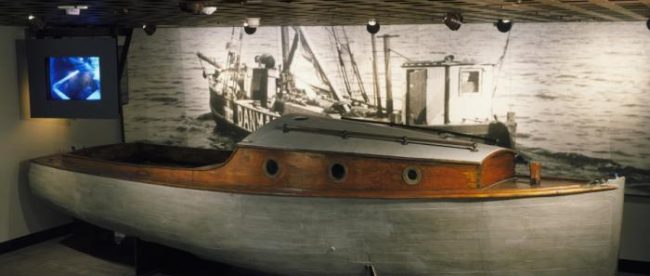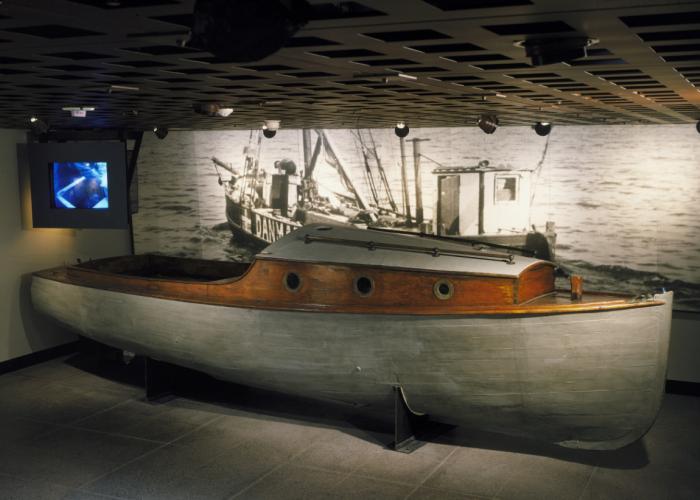How Dead Rabbits and Cocaine Saved Thousands of Lives


On the morning of April 9, 1940, the Nazis invaded neighboring Denmark. The subsequent battle was short-lived — Denmark’s armed forces were meager and using often outdated arms and equipment. Before the day concluded, and with fewer than 50 combat deaths suffered by both sides total, Denmark capitulated. The German occupation of Denmark had begun.
The first few years under German control were, relatively speaking, not terrible for the Danes, including Danish Jews. Hitler called Denmark “a model protectorate” and allowed the occupied nation to retain its king, parliament, and judicial system. And despite the Nazis’ overall efforts toward genocide, Jews found a somewhat safe home in Denmark, at least initially; the Danish government famously resisted the Nazis’ demands that Denmark enact anti-Jewish legislation.
In 1943, though, the German approach toward Denmark’s Jews took a turn for the worse. That August, the Germans dissolved the Danish government and, in October, ordered the deportation of the country’s roughly 7,000 Jews. For most, if not almost all of those Danish Jews, this was effectively a death sentence.
Many Danes worked together to help their Jewish neighbors escape such a fate. And geography gave these Jews and their allies hope. Sweden, Denmark’s neighbor across the straits between the North and Baltic Seas, had been able to maintain its neutrality throughout the war. Danish fishing boats like the one seen above (via the U.S. Holocaust Memorial Museum) frequented those waters, and the Danish Resistance outfitted many such boats with false bottoms. Many Danish Jews hid in the newly-made compartment in these boats; the fisherman bravely took these refugees across the water to Sweden, where they were safe.
As Germans got wind of these plans, though, they came up with a countermeasure: dogs. Shuttering the Danish fishing industry wasn’t an option — the German soldiers needed food, too — so instead, the Nazis brought out the dogs to sniff out any people hiding below decks. After the bloodhounds led to the capture and murder of a few families and their would-be heroes, it became clear to the Denmark Resistance and its Jewish friends that needed another solution.
Ernst Morch, a doctor, and his friend, a pharmacist named Oluf Hubner, came up with an innovative solution — they decided to break the dogs’ sense of smell, at least temporarily. Decades later, Morch explained the idea to the Chicago Tribune:
We discovered that if we took rabbit`s blood, and dried it, this created a lovely brownish powder that Oluf`s cocker spaniel couldn`t resist. He licked it, sniffed it, rolled in it. To this, we added cocaine, a 10 percent mixture.
This cocaine-blood mixture we then sprinkled on the decks of our fishing boats. The next Gestapo dog that came along loved and sniffed and licked and reported back to his master that he couldn`t smell anything . . . because he couldn`t smell anything. His nose had a good local anesthetic.
This solution proved effective, allowing Denmark to continue its efforts to protect the lives of its Jewish citizens. In total, Denmark was able to save the lives of more than 7,200 of its 7,800 Jews by evacuating them to Sweden
Bonus fact: Another hurdle in the Danish effort to evacuate its Jews? To avoid detection, refugees hiding on boats needed to stay silent, and babies and other young children aren’t likely to do that. Per Morch, as quoted by the Tribune in the above-linked article, the workaround was to put their lives at risk: “we gave the parents barbiturate suppositories, and they`d knock the kids out–actually put them in life-threatening comas. Then when the Swedes took over, doctors would quickly revive them.”
From the Archives: Saving 6,000: The Japanese diplomat who saved thousands of Jews from the Nazis.
